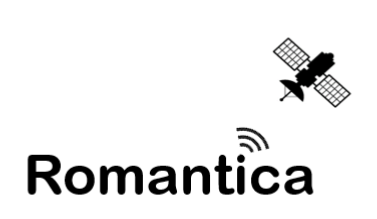
-
StatusCompleted
-
Status date2022-01-31
-
Activity Code3A.107
The objective of the Romantica ESA study activity is to develop Radio Resource Management (RRM) techniques for the new generation of commercial Very High Throughput Systems (VHTS).
These RRM solutions are capable of exploiting the functionalities of these new satellites systems based on active antennas and on-board processors in order to maximize the system throughput, while maintaining good Quality of Service (QoS) for all the interactive applications of a satellite telecommunication system (i.e. video streaming, web, ftp and VoIP traffic sources).
The main challenge of the program is to research innovative RRM solutions able to follow in real time the fluctuations of traffic, while considering some typical traffic models, not uniform traffic maps and different classes of user terminals.
A critical task is the definition of a fast solution able to optimize the beam hopping plan and to continuously readapt it in line with the changes of the traffic requirements.
Another challenging task is the investigation about a modern packet scheduler algorithm, able to select the packets considering their traffic QoS requirements, and integrate it in the final RRM solution.
The Advanced RRM algorithm developed during the Romantica study has been validated and tested considering a European coverage, different traffic maps (named 2025 and 2030) and its KPI results have been compared with a Benchmark algorithm considering a 108 and 329 beam coverage in the same service area.
The Advanced RRM algorithm is able to reach 218.9 and 225.3 Gbps in the 2025 and 2030 traffic map case respectively, with a gain of 35.8 % and 38.1 % when considering the 108 beams Benchmark case. A significant result is obtained too when the term of comparison is the 329 beam Benchmark one, with a gain of 23.1 % and 25.3 %. This huge improvement in the system capacity performance is already sufficient to demonstrate how the Advanced RRM algorithm is really an innovative way to approach a satcom system resource optimization.
Moreover, the Advanced RRM algorithm is able to manage correctly the QoS requirements, handling with different type of interactive sources with different packet distribution and different packet priority as video streaming, ftp, web and Voip traffic sources.
The RRM algorithm developed presents the following main features:
- Link direction flexibility (usable on both forward and return link)
- Scenario totally configurable in terms of coverage areas, number of user terminals, user terminals classes, beam placement, active antenna directivity and power per beam
- Traffic models including video streaming, ftp, web and VoIP source implemented. Quantity of traffic packets per user terminal and per type of application depends on the input traffic map
- Innovative packet scheduling using a PF-ER method, taking in account the traffic source QoS requirements
- Very fast illumination plan optimizer, working on the concept of “pseudo poisson disk” algorithm, that minimizes the interference per beam and timeslot and maximize the beam useable capacity
- Illumination plan loop approach able to follow the system required throughput fluctuations in real time
- Scenario KPI performances calculated at system, application and user level in terms of:
- Throughput
- Delay statistics
- Jitter statistics
- Packet Loss Rate
- Percentage of users meeting QoS
- Modularity, each functional block interface is described and it can be modified (or replaced) in possible further software updates
- Input data and output results easily shown by means of a dedicated GUI
The RRM demonstrator includes two RRM algorithms:
- an Advanced RRM solution, that optimizes at the same time the system resource planning and the packet scheduling management.
- a Benchmark RRM solution, that optimizes only the packet scheduler
The general scheduler architecture of the Advanced RRM algorithm is presented in the next figure.

These main logical blocks are presents:
- The “traffic flow generator” that generates IP packets
- The “queue updater” manager that controls the queue status, filtering the overall packets generated by the previous logical block and selecting only the packet present in the queues for each illumination plan loop.
- The “Proportional Fairness Exponential Rule” (PF-ER) module, that deals with QoS requirements for the different traffic flows and in particular the QoS-class-based deadlines of the packets.
- The “TM-PPD” algorithm, that is able to optimize the illumination plan and to calculate the offered, usable and unmet capacity
- The “Final Scheduler”, that performs the second level of packet scheduling and identifies which packets in the queue have to be sent
The benchmark RRM architecture is presented in the next figure.

Here the illumination plan is not optimized at each iteration, but it is provided as input and a Round Robin scheduling approach is applied.
The Romantica study addresses 4 Tasks:
- Definition of a system scenario to be considered when investigating the innovative RRM algorithms (coverage, satellite configuration, user terminals, traffic models)
- Investigation of two solutions, a Benchmark algorithm (beam hopping and packet scheduling with separated optimizations) and an Advanced RRM algorithm that optimizes at the same time the system resource planning and the packet scheduling management
- Design of the architecture of the RRM, defining the functions implemented in the different parts of the system architecture (satellite payload, Gateways, dedicated Network Management System facilities)
- Development, validation and test of the RRM demonstrator tool
The project has been completed. The final RRM Demonstrator software has been developed and tested successfully.



